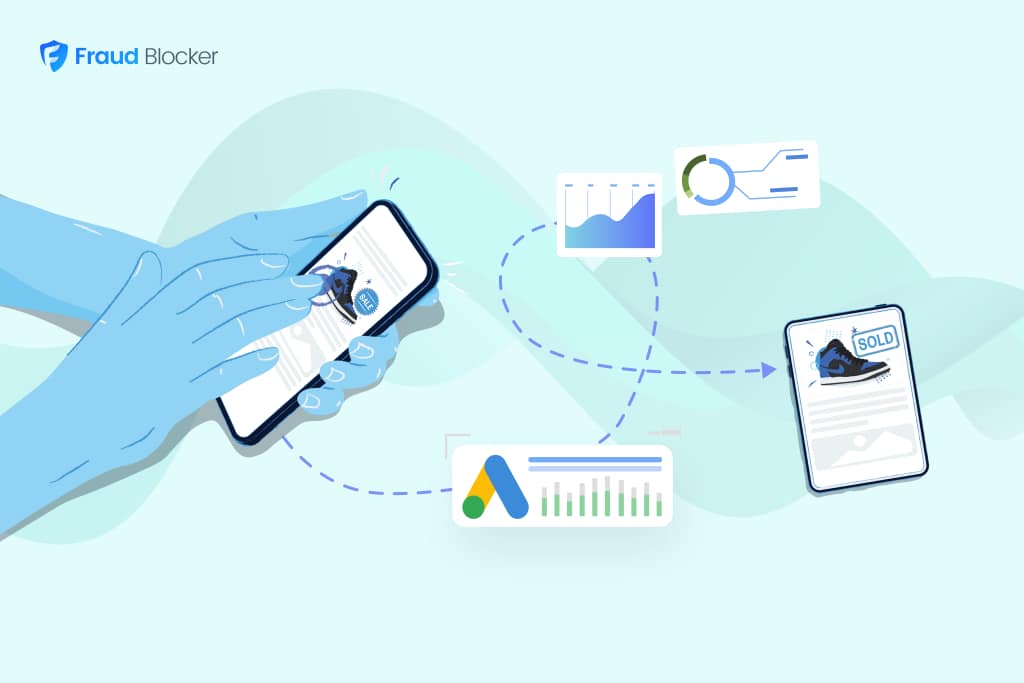
NEW New feature: Verify & block fake emails

We improve your ad performance by blocking click fraud and fake emails

Click fraud is costing advertisers billions in loses. Learn more here.

Click fraud is costing advertisers billions in loses. Learn more here.

Click fraud entails clicks on online ads that do not originate from real user interest. This is often caused by bots, click farms or competitors that click ads to generate revenue or cause harm to the advertiser.
Click fraud is part of a larger category of “invalid clicks” that also includes accidental engagements and repeated clicks.
Examples of clicks Google may deem invalid include:
Despite Google’s efforts to prevent click fraud, independent studies still show click fraud remains a major problem for digital advertisers.
Based on an in-depth study conducted by Juniper Research, 22% of all ad spend is lost due to fraud. This totals $84 billion in wasted ad spend in 2023.
Juniper Research’s was generated after reviewing 78,700 datapoints which analyzed digital advertising activity in 45 select countries across 8 key regions between 2019 and 2028.
You can read our more comprehensive breakdown of click fraud here.
Here are two recent examples of ad fraud:
1. Forbes misleads advertisers with Made-for-advertising click fraud:
The WSJ revealed in March 2024, that Forbes had knowingly sold ads under a subdomain, www3.forbes.com, that contained spammy Made-for-advertising web pages (“MFA.”) MFA sites are largely designed to generate clicks from users with an extremely high volume of ads on the page and placements of ads over critical navigation links. This ad inventory was sold as normal www.forbes.com without any disclosures from the publisher.
2. Google’s TrueView ad fraud scandal:
Adalytics, a premier advertising research firm, conducted an in-depth investigation which uncovered discrepancies in ad counting methods. Their examination of more than 1,000 brand campaigns showed that numerous TrueView advertisements on platforms other than YouTube did not meet Google’s established criteria.
This encompassed video advertisements displayed in minimized video players, muted ads, ads mixed with empty content, or those that barely engaged viewers. Additionally, there were numerous cases where ads were shown to the bot “URLScan.io,” that watched the videos.
Read more about this case: Google’s TrueView is Costing Advertisers Billions in ‘Ad Fraud’.
According to Google, they employ a combination of live reviews, automated filtering, machine learning, and in-depth investigations to identify and minimize click fraud and invalid traffic.
Their detection system “use machine learning and complex algorithms to protect our partners and keep our ad platforms clean.” For cases of suspected invalid activity that might not be captured by our automated systems, we conduct manual reviews. If we detect unusual traffic patterns, or if an advertiser or publisher presents a legitimate concern, our team examines the data closely, makes informed decisions, or devises new filters.
Their detection process includes:
You can view the amount of “invalid clicks,” which includes click fraud, detected by Google Ads in your reports. Here’s how:
Scroll to the right and you’ll see your new columns added along with the data.
How to view invalid clicks in Google Ads
Sometimes.
Google automatically refunds you for clicks they detect as invalid, but if you are seeing additional fraud in your analytics then you’ll need to complete a form and provide documentation to prove you shouldn’t be paying for those clicks.
A little warning though: Google does not approve these requests very often, even with detailed server logs and other reports that suggest fraud occurred. Nonetheless, check out our step-by-step instructions for getting a refund for invalid clicks from Google Ads.
Short answer: Not really 😔.
Google does supervise publishers to ensure your ads aren’t place in poor places just to generate a click – such as placing them on top of play buttons or hiding them as nav menu links.
They also don’t charge visitors for “double-clicking” an ad. This is similar to when you open a folder on your computer where you need to double-click on it.
However, Google Ads does charge you if you click on an ad, visit a website, and bounce very quickly (even before it finishes loading). This is very common on mobile devices and on social media, where the screens are smaller and ads can consume more than 50% of the space on the screen.
Google Ads also charges you if your intent is to close the ad by pressing the “X” in the upper right corner, as shown in an excellent heat map from Dr Augustine Fou:
Location of clicks on an ad suggests users intended to close the ad.
Advertising agencies and ad networks, such as Google Ads, are not incentivized to combat click fraud. Since their company earnings are tied to the amount an advertiser spends with them, their primary interest lies in boosting their traffic volumes, disregarding the real return on investment (ROI) for the end client. This may involve letting some click fraud through, at the expense of performance for the advertiser. Some agreements with agencies or ad networks can be based on performance, but those are extremely rare and not an industry standard.
The problem is exacerbated by the fact that networks would have fewer impressions to sell if they were to cut down on fraud, thereby diminishing their appeal to major purchasers.
Read more about this problem: Ad Fraud is a Problem Sellers Don’t Want to Solve
The dual role of AI in both enabling and combating ad fraud is a widely discussed subject among global fraud prevention platforms.
Tools like ChatGPT can develop sophisticated bots and malware capable of emulating human actions. Such emulation enables these fraudsters to siphon off advertising budgets by generating ad views and clicks that real users never encounter.
AI also allows fraudsters to continually alter their tactics to evade discovery. In response, they leverage AI not just to disguise their illicit activities but also to identify chances to simulate legitimate traffic. To counter this, fraud prevention specialists can use AI analytics to help verify, pinpoint, and scrutinize fraudulent behavior. Nonetheless, AI aims to dodge detection from AI-driven anti-fraud measures, leading to an ongoing struggle akin to a “cat-and-mouse” game.
As you’ve read, Google Ads doesn’t stop all click fraud. There is still a large portion that exists due to a conflict-of-interest, new AI tools, or from accidental clicks and competitors.
Here are a few suggestions to get cleaner traffic and better performance with your Google Ads campaigns:
We can help boost your ad performance by removing fraud, bots, accidental clicks, and more from your advertising campaigns. Try our 7-day free trial and see how much money we can save you.


